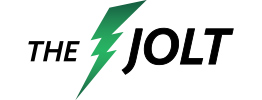Chris Reilly’s note: The artificial intelligence (AI) boom is entering a new phase most investors are completely unprepared for, as Stephen recently explained in his AI Endgame event.
Today, Stephen tells us all about the next chapter—the phase beyond the infrastructure buildout, and how to prepare.
***
Chris Reilly: Stephen, your essay back in January—The Nvidia of 2025—has proven to be very profitable for Jolt readers.
In that piece, you highlighted SK Hynix (a South Korean stock) and Micron Technology (MU)... and explained how they’re selling the essential ingredient that makes a new class of AI models possible. You said, “I predict they’ll be two of the best-performing stocks of 2025.”
You nailed it. Since then, SK Hynix has soared over 200%, and Micron is up 140%.
Stephen McBride: Congrats to Jolt readers who took advantage of that opportunity.
The reality is, AI models don’t just need fast processors like the ones Nvidia (NVDA) provides. They need enormous amounts of high-bandwidth memory to keep those processors fed. SK Hynix and Micron dominate that niche. So it wasn’t a flashy or sexy idea, but it was a profitable one.
Chris: Why does an idea like this seem so obvious in hindsight, when it never got on most investors’ radars?
Stephen: I’d argue it was obvious in foresight too, but only if you go visit the data centers and talk to the people in the trenches of AI. Not everyone can do that.
I actually just visited a data center last week in Santa Clara, California, near Nvidia’s flagship campus. Rows and rows of 600 lb server racks that hum so loud, you can barely hold a conversation.
You should see all the cooling equipment, power, memory, and processers at work. Hundreds of millions of dollars of equipment, and every component is made by a company.
Chris: You say that first wave—the hardware, the servers, the data centers—was the clearest way to play AI’s early growth.
But as you explained at your AI Endgame event, that was just Phase 1.
Stephen: Right. When ChatGPT first launched three years ago, it was the dawn of a megatrend. Every model needed massive computing power, so investors who understood how the infrastructure boom would unfold made substantial gains.
But that phase has matured. Nvidia is the biggest company in history. Everyone knows AI infrastructure is critical. The easy money has been made.
|
Chris: Which brings us to what you’re calling the “Endgame.”
Stephen: Right. And just to be clear, the AI story isn’t ending. Far from it. What I’m talking about is the next chapter—the phase beyond the infrastructure buildout. This is when we start seeing the real-world impact of the technology that’s been built over the past few years.
Chris: So if the first wave was about building the tools, what comes next?
Stephen: Think back to the internet in the 1990s. Investors first made good money on companies building the pipes—Cisco Systems (CSCO), Intel (INTC), AOL. But the really transformative gains came next, from companies using that infrastructure in new ways: Amazon (AMZN), Netflix (NFLX), Google (GOOGL), Uber (UBER).
AI is following the same pattern. The “pipes” are coming online. Now it’s time to see what gets created because of them.
I call this next phase “AI-native companies.” These are businesses that couldn’t exist without AI—apps, platforms, and services built entirely around its capabilities. We’re moving from the builders to the users.
Chris: Seems like a clear pattern. So can you give us an example of an AI-native company?
Stephen: In San Francisco last week, I met with a private company making robotic prosthetic arms for amputees. Inside the arm is a custom, deep-learning ChatGPT model that can interpret the electrical signals from the amputee’s brain and turn them into actual movements of the arm.
Within five minutes of strapping on the arm for the first time, the amputee learns to move it with 26 degrees of freedom, including moving each individual finger.
Chris: That’s… incredible. Most people think AI is just a chatbot. The AI models can be put in physical products?
Stephen: Yes, and that’s just a subcategory. AI is enabling us to do things that were never possible before in human history. And we’re just at the start. It’s a very exciting time.
Chris: So the focus is no longer on chips or servers or memory—it’s on how AI is actually applied.
Stephen: Exactly. Infrastructure created the opportunity. AI-native companies will seize it. And the exciting part for investors is that these businesses are just emerging.
My partner Chris Wood and I recommended the only AI-native stock that’s passed through our Disruption_X quality growth screener so far. It’s a little-known company that isn’t just using AI as a tool—the company is built upon AI.
Chris: And I know Chris thinks it can eventually hit a $1 trillion market cap... which is 75X its current size...
Stephen: Yes, we explain why in our brand-new report: “This Al Platform Stock Has Trillion-Dollar Potential.”
Chris: Thanks, Stephen. This new report is only available to members of your Disruption_X advisory. Reader, go here for the full details. You’ll see everything that comes with a membership beyond this report, so you’re fully ready to capitalize on this phase of the AI boom.



